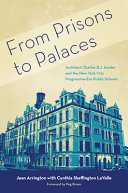

Most ebook files are in PDF format, so you can easily read them using various software such as Foxit Reader or directly on the Google Chrome browser.
Some ebook files are released by publishers in other formats such as .awz, .mobi, .epub, .fb2, etc. You may need to install specific software to read these formats on mobile/PC, such as Calibre.
Please read the tutorial at this link: https://ebookbell.com/faq
We offer FREE conversion to the popular formats you request; however, this may take some time. Therefore, right after payment, please email us, and we will try to provide the service as quickly as possible.
For some exceptional file formats or broken links (if any), please refrain from opening any disputes. Instead, email us first, and we will try to assist within a maximum of 6 hours.
EbookBell Team

4.4
102 reviewsAs Superintendent of School Buildings from 1891 to 1922, architect Charles B. J. Snyder elevated the standards of school architecture. Unprecedented immigration and Progressive Era changes in educational philosophy led to his fresh approach to design and architecture, which forever altered the look and feel of twentieth-century classrooms and school buildings. Students rich or poor, immigrant or native New Yorker, went from learning in factory-like schools to attending classes in schools with architectural designs and enhancements that to many made them seem like palaces. Spanning three decades, From Factories to Palaces provides a thought-provoking narrative of Charles Snyder and shows how he integrated his personal experiences and innovative design skills with Progressive Era school reform to improve students’ educational experience in New York City and, by extension, across the nation.
During his thirty-one years of service, Snyder oversaw the construction of more than 400 New York City public schools and additions, of which more than half remain in use today. Instead of blending in with the surrounding buildings as earlier schools had, Snyder’s were grand and imposing. “He does that which no other architect before his time ever did or tried: He builds them beautiful,” wrote Jacob Riis. Working with the Building Bureau, Snyder addressed the school situation on three fronts: appearance, construction, and function. He re-designed schools for greater light and air, improved their sanitary facilities, and incorporated quality-of-life features such as heated cloakrooms and water fountains.
Author and educator Dr. Jean Arrington chronicles how Snyder worked alongside a group of like-minded, hardworking individuals―Building Bureau draftsmen, builders, engineers, school administrators, teachers, and custodians―to accomplish this feat.
This revelatory book offers fascinating glimpses
…